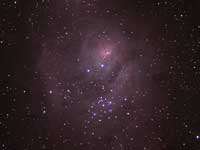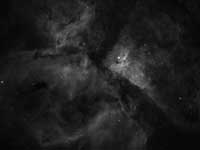ED127 APO
After experiencing some limitations with the MN152 and WO 72 telescopes, I was looking around for new primary imaging scope. The main contenders on my shopping list were
- the 8" GSO RC scope for 2,699 AUD
- Skywatcher ED120 Back Diamond for 2,999 AUD
- Skywatcher PRO ED 120 for 1,799 AUD
I carefully reviewed the results others were getting with the above scopes. Each has it's own issues such as field curvature, price, availability etc. Then I came across the ED127, and the amazing results achieved by Gary Honis. My mind was made up and I placed the order. With amazing speed the scope arrived safe and sound in less than a week.
After some research it seems this scope is made in the same factory that makes the MN152 : Jinghua Optics & Electronic Co.. This scope has been marketed under several brand names such as Maxvision, Prostar, Explore Scientific, Meade and North Group / Hioptic.
Specifications:
- Aperture : 127mm (5")
- Design : 3-element Apochromatic Refractor
- Focal Length : 952mm
- f/ratio : f/7.5
- Dew Shield : Built-in Extendable ( Recently there has been an upgrade to the scope - the main difference is that the dew shield is now reversible in the newer scopes.)
- Focuser : Machined Aluminum Crayford
- Weight : 8.5 kg

Focuser
On the advice of other users and the vendor, I elected to order a more advanced focuser. From my perspective, it's perfectly adequate focuser for imaging with a DSLR. I do find it's a little stretched holding up the weight of the much larger SBIG ST-L 11000M. There is only one thumb screw in the focuser and this pushed against the standard brass compression ring. This compression ring and thumb screw are part of the focuser and can not be removed to screw in a CCD camera. I will tap out some more holes and insert socket head cap screws instead of the thumb screw. I mainly use this scope for imaging, but it should be noted that it is very difficult (or impossible) to reach focus with a 2" diagonal and eyepiece with this focuser. It's not a problem for me, because I only use a 1.24 " diagonal when I'm doing my drift alignment any how.
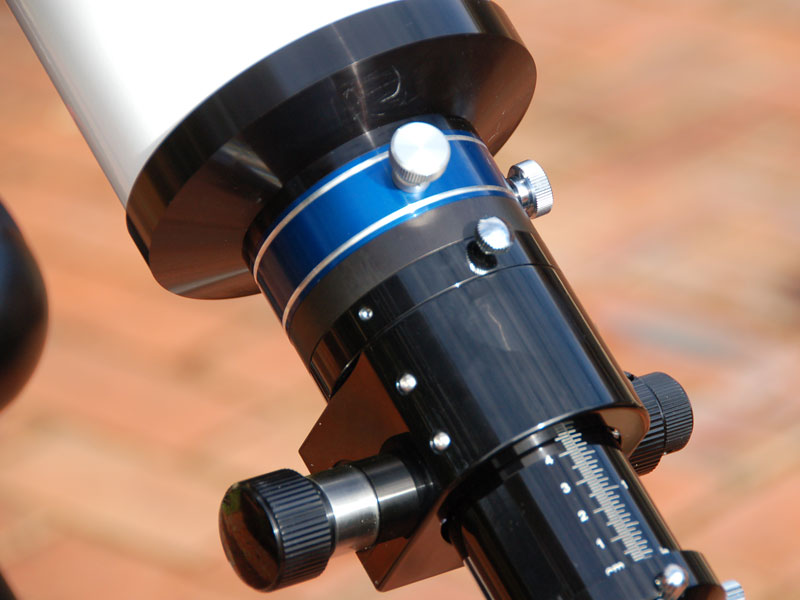
Chromatic Aberration
This scope is sold as an triplet APO, which it is. But it should be noted that there is still some uncorrected Chromatic aberration. The question is how much? I don't have the tools or skills to quantify it, but as many have reported it is minimal.
The following video shows intra focal/focal/and extra focal performance of the scope on a very very bright star (Sirius? Sorry I can't remember which one)
The video shows that when it seems the scope is in perfect focus, there is in fact a blue halo. Just out of focus, the halo can be removed. What does this mean? It means that the blue wavelength is not in perfect focus and like all refracting lenses, chromatic aberration is present.
This got me thinking - how could it be that the Bahtinov mask says it is in focus, when clearly the blue is out of focus? What would happen with a CCD camera and different colored filters?
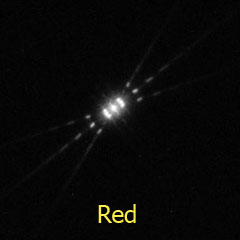

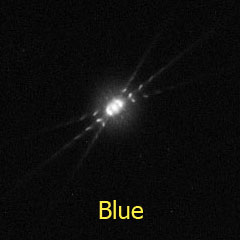
The images taken with the Red and Green filters look in focus, but what is going on with the Blue filter? A quick look says it's not in focus. A very close look and something strange is going on - the lines are not straight - they have little curves.
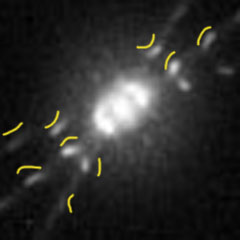
Of course this makes sense - red, blue and green light are not distinct wavelengths, it is a smooth continuum. So let's look at the Luminance image to see the combination of R+G+B

The little curves are now quite clear.
To round it out, here is an image taken with the Ha filter in place and a very rough stack of the LRGB images (without any alignment).
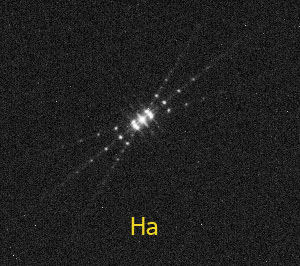

All this leads me to the following conclusions:
- Refocus when the blue filter is in place
- The straightness of the lines in a Bahtinov Mask image can give an indication of the quality of the color correction
- This might be a good scope for narrowband imaging
Image Quality
Stars are quite round and tight almost all the way to the edge of the field of a typical DSLR, although there is some slight curvature noticeable at the very edge of the image, but it's not a big deal. I have posted some results from CCD Inspector below. I have found the Astrotech 2" Flattener works really well with a DSLR and this scope. The image below was taken with the Canon 500D and the AT FF under poor conditions.
With the bigger chip in the ST-L 11000M, I have found the TSRC Flat2 works OK. Below is a Ha image taken with this larger chip.
CCD Inspector Report (Nikon D50):
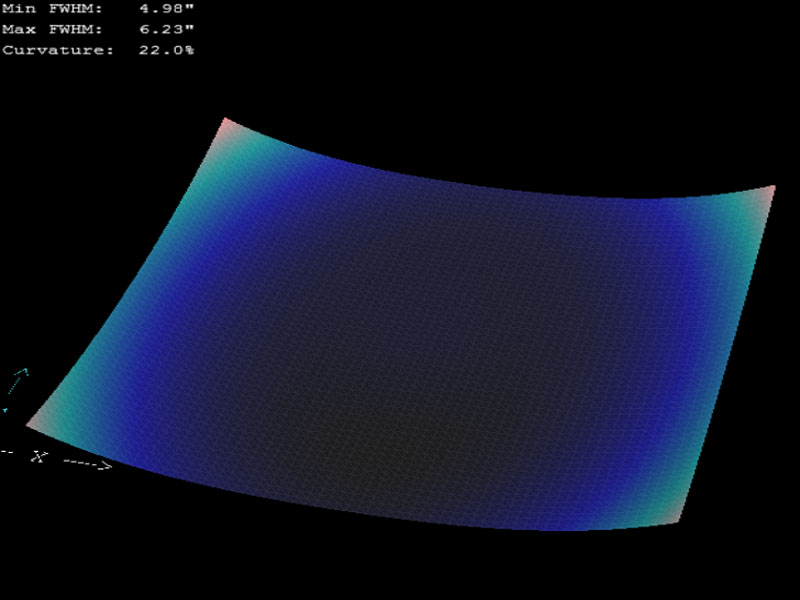
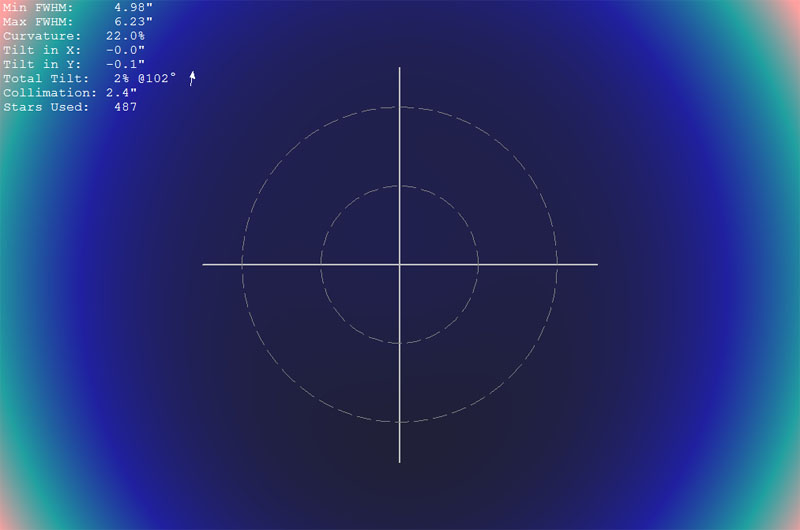
Summary
Overall I'm very happy with this telescope. One day I will upgrade to a FSQ, but for now I'm enjoying using this scope when I don't want the hassle of a long focal length. The light gathering power is impressive and there are no diffraction spikes or collimation to worry about.
